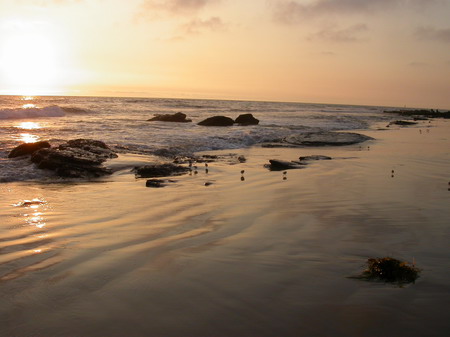
This is the beach at Crystal Cove. The sand feels damn good under your feet after getting off a 12-hour plane ride. We are home for the holidays, terrorist fools be damned.

A Cosbu journey is never complete without some jump pics. Adam is jumping for joy.

Nam looks happy too.
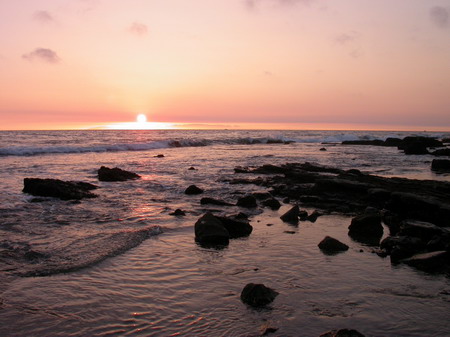
Yeah, this is gonna be a good trip.
Month: December 2003
Homeward Bound
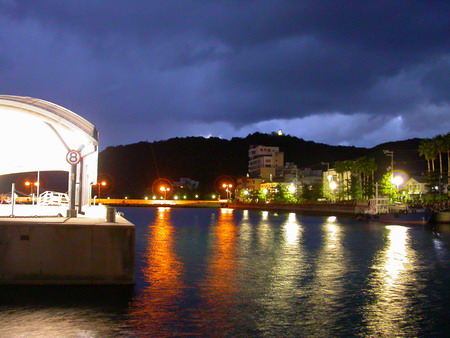
The woman and I woke up at 5:00 to be greeted by the coldest morning of the year (so far). The sky was dark and opening the curtains let in a wave of cold that assaulted my bare feet with pinprick chills. The stiffened tatami mats crackled underfoot as I stumbled out the door into the hallway, where the first breath of air always seems to suck every last bit of warmth from my body.
But onward we go!
I am currently blogging on a hydrofoil that is taking us from Sumoto to Kansai International Airport… Is blogging from a hydrofoil unique? I dunno, but it is making me kind of ill.
Laters, true believers.
Stacks of Asse
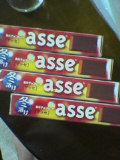
Asse brand chocolate is a sure hit, in my mind. We took several boxes back to the states as gifts because nothing says “I love you” like a handful of Asse.
Smart Democrat
Living away from my home country for a decade has provided me a clearer sight in regard to politics. I left America as an angry youth totally disenchanted with my country’s political system. Ten years of seeing my country from afar and sometimes through the eyes of outsiders has given me a new perspective on many issues. It has in fact brought me closer to what it is to be an American. This rare political sentiment was sparked by a recent column written by one of my favorite authors, Orson Scott Card. His website is also full of interesting essays. I find his perspective rooted in reality which is really quite refreshing for a Dem. Most Democrats in the public eye these days seem hell-bent on destroying their own party by means of scuttling the decks we stand on (and sporting hats made of foil as a year-round fashion statement).
Get your 8-tracks here!
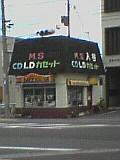
Watch out, Virgin/Tower/HMV! This little shop in Sumoto proudly boasts CDs, LDs, and cassette tapes! Reminds me of an NTT mobile store in the Kyushu countryside that had a sign advertising “mobile phones, car phones, and shoulder phones“.
All-in-one
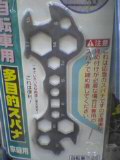
I get the feeling that the person who thought this product up is frustrated by the idiots at his company who can’t appreciate his visions of a future robotic nanosociety where metal tools are grown, not stamped or molded.
Plasticland
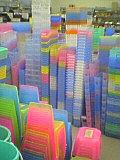
When you enter a 100 yen store, make a beeline for the molded plastics section, it will instantly make you feel better, richer even. Do you know how much this stuff would have been worth say a hundred years ago? Two hundred? (Neither do I. I just like to make other people think.)
I worry about Adam
He always sees the cup half empty. Dude! It’s a magic phone camera! You must learn to squeeze pennies from even the rocks strewn across your path if you ever want to be a real salaryman.
All Your Yen Is Belong to Us
It’s official:
The Japanese can improve on anything, even 99 cent stores. In Japan, the Hyaku-en store is sometimes referred to as the “video game arcade for adults” because one item costs 100 yen, the same as the price for one play at an arcade. You can buy pretty much anything there, from food and sundries (whatever the hell those are) to stationery to dog clothes to handy neoprene pouches for gadgets to cheap Taiwanese screwdrivers, etc., etc., etc. My favorite items at the Hyaku-en store are the ones that are obviously invented just for the Daiso. Maybe I can get some pictures up later, but these would include magnetic fridge signs with nonsensical Engrish messages, fake dead crows to keep real, live ones out of your rice fields, and hardware contraptions that would make Rube Goldberg smile. Yes, I will need pictures.
Update: Pastel plasticware and the wrench from TV shoppingland.
Click Away!
The most addictive flash page ever:
https://www.albinoblacksheep.com/games/tinygrow
Might be even more fun when smashed.
Also:
Flash Battleship
